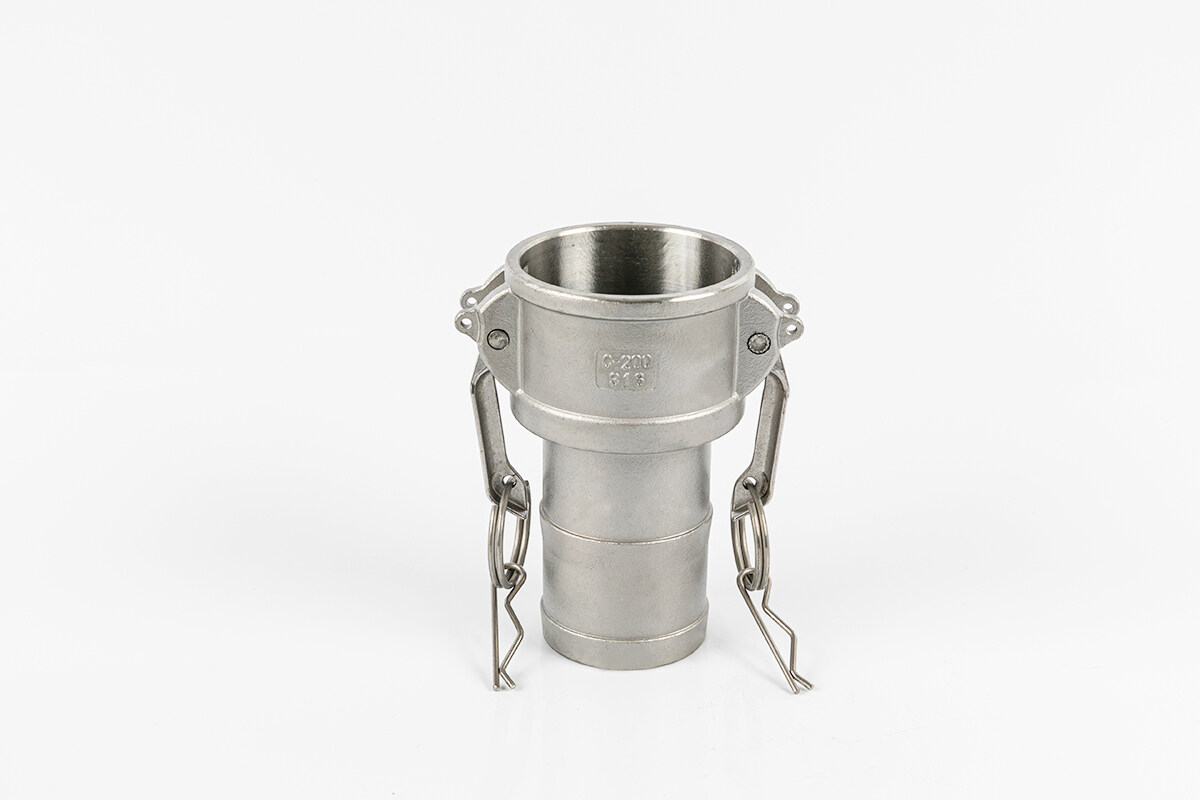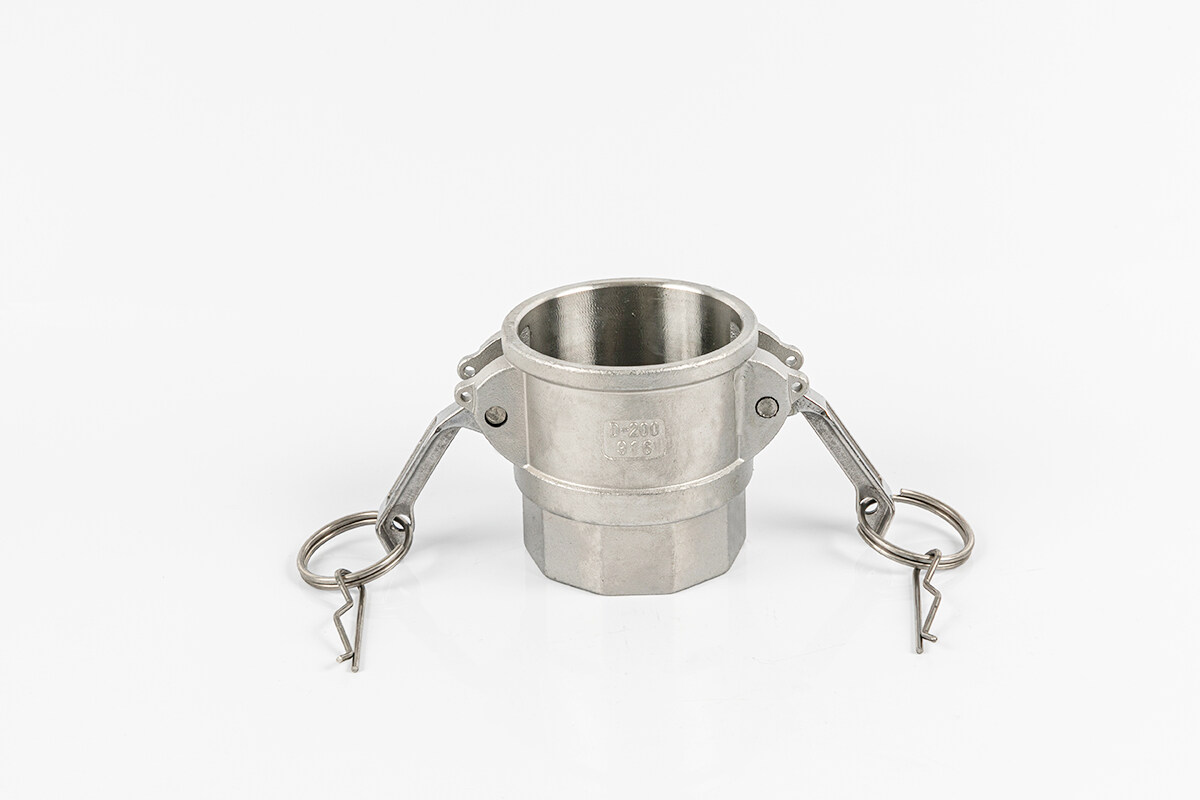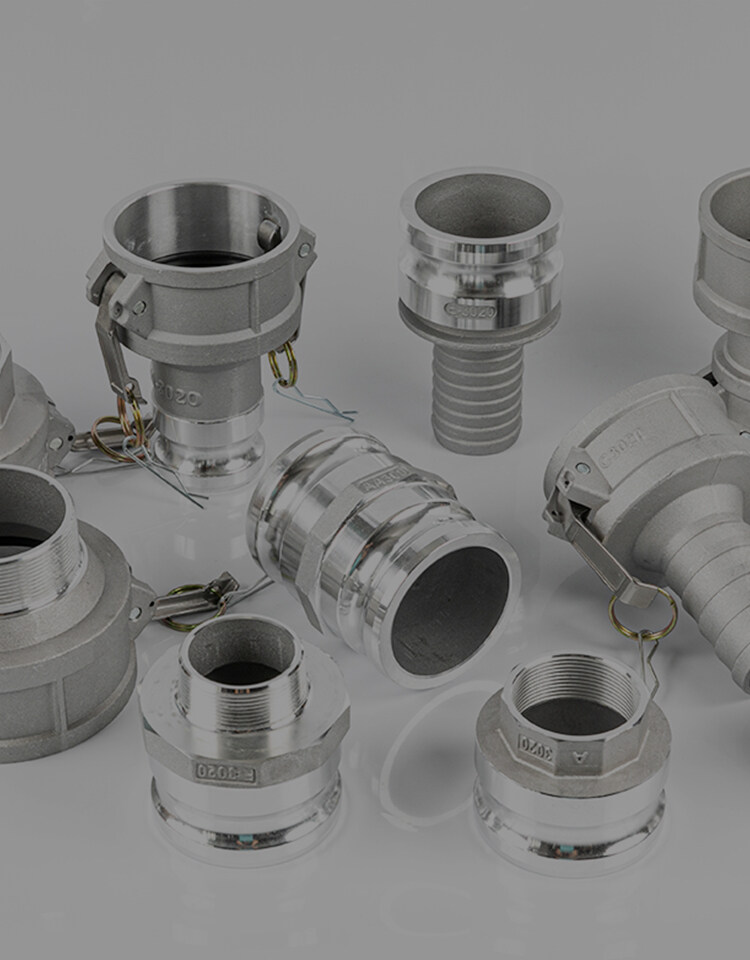Email format error
Email cannot be empty
Email already exists
6-20 characters(letters plus numbers only)
The password is inconsistent
Email format error
Email cannot be empty
Email does not exist
6-20 characters(letters plus numbers only)
The password is inconsistent

News
Here, you can describe a piece of text you want to express

Stainless Camlock Fittings: The Ultimate Guide to Choosing the Right Fittings for Your Needs
When it comes to fluid transfer systems, having the right fittings is crucial for ensuring a secure and leak-free connection. One type of fitting that has gained popularity in recent years is stainless camlock fittings. In this comprehensive guide, we will explore everything you need to know about stainless camlock fittings, including their benefits, applications, and how to choose the right fittings for your specific needs.
Chapter 1: Understanding Stainless Camlock Fittings
1.1 What are Stainless Camlock Fittings?
Stainless camlock fittings, also known as cam and groove couplings, are quick-connect couplings that provide a secure and leak-proof connection for fluid transfer applications. They consist of two main parts: the male adapter and the female coupler. The male adapter has a groove that fits into the female coupler, which has a cam arm that locks the two parts together. This design allows for easy and quick connection and disconnection without the need for tools.
1.2 The Advantages of Stainless Camlock Fittings
Stainless camlock fittings offer several advantages over other types of fittings. Firstly, they are highly versatile and can be used in a wide range of applications, including industrial, agricultural, and food and beverage industries. Secondly, they provide a secure and leak-free connection, ensuring the integrity of the fluid transfer system. Additionally, stainless camlock fittings are durable and resistant to corrosion, making them suitable for use in harsh environments.
1.3 Common Applications of Stainless Camlock Fittings
Stainless camlock fittings find applications in various industries. In the industrial sector, they are commonly used for transferring chemicals, petroleum products, and water. In the agricultural sector, they are used for irrigation systems, fertilizers, and pesticides. In the food and beverage industry, stainless camlock fittings are used for transferring liquids such as milk, juices, and beer. Their versatility and ease of use make them a popular choice in many different applications.
1.4 How Stainless Camlock Fittings Work
Stainless camlock fittings work by using a cam arm mechanism to secure the connection between the male adapter and the female coupler. When the male adapter is inserted into the female coupler, the cam arms are engaged, creating a tight and secure connection. To disconnect, the cam arms are released, allowing for easy removal of the male adapter. This quick-connect system saves time and effort in fluid transfer operations.
Chapter 2: Types of Stainless Camlock Fittings
2.1 Stainless Steel Camlock Fittings Manufacturers: A Brief Overview
There are several manufacturers that specialize in producing stainless steel camlock fittings. These manufacturers offer a wide range of fittings in different sizes, materials, and configurations to meet various industry requirements. Some well-known manufacturers include XYZ Company, ABC Industries, and DEF Manufacturing. When choosing stainless camlock fittings, it is important to select reputable manufacturers that adhere to industry standards and provide high-quality products.
2.2 Stainless Steel Compression Coupling: An Alternative to Camlock Fittings
While stainless camlock fittings are widely used, there are alternative options available, such as stainless steel compression couplings. Compression couplings provide a secure connection by compressing a gasket or ferrule onto the pipe or tubing. They are commonly used in plumbing and HVAC systems. However, it is important to note that compression couplings may not be as quick and easy to connect and disconnect as camlock fittings.
2.3 Stainless Steel Camlock Coupling vs. Stainless Steel Compression Coupling
When deciding between stainless steel camlock couplings and compression couplings, several factors need to be considered. Camlock couplings offer quick and easy connection and disconnection, making them ideal for applications that require frequent changes or maintenance. Compression couplings, on the other hand, provide a more permanent and secure connection, making them suitable for applications where a leak-proof seal is essential. The choice between the two depends on the specific requirements of the application.
2.4 Stainless Steel Coupling Nuts: A Closer Look
In addition to camlock couplings, stainless steel coupling nuts are another important component in fluid transfer systems. Coupling nuts are used to connect two threaded rods or pipes together. They provide a secure and adjustable connection, allowing for easy installation and disassembly. Stainless steel coupling nuts are preferred for their corrosion resistance and durability, making them suitable for various applications.
Chapter 3: Choosing the Right Stainless Camlock Fittings
3.1 Factors to Consider When Selecting Stainless Camlock Fittings
When choosing stainless camlock fittings, several factors need to be considered to ensure the right fit for your specific needs. These factors include the size and compatibility of the fittings, the material selection, sealing options, pressure and temperature ratings, and any special considerations for specific applications.
3.2 Sizing and Compatibility
One of the most important factors to consider is the sizing and compatibility of the fittings. Stainless camlock fittings come in various sizes, ranging from ½ inch to 6 inches or more. It is crucial to select fittings that match the size of the pipes or hoses being connected to ensure a proper fit and a secure connection. Additionally, compatibility with other fittings and equipment should be considered to ensure a seamless integration into the fluid transfer system.
3.3 Material Selection: Stainless Steel Grades
Stainless camlock fittings are available in different grades of stainless steel, each with its own properties and advantages. The most common stainless steel grades used for camlock fittings are 304 and 316. Grade 304 stainless steel is suitable for most general-purpose applications, while grade 316 stainless steel offers enhanced corrosion resistance, making it ideal for more demanding environments, such as marine or chemical industries. The choice of stainless steel grade depends on the specific requirements of the application.
3.4 Sealing Options: EPDM, Buna-N, and PTFE
Sealing options for stainless camlock fittings include EPDM (ethylene propylene diene monomer), Buna-N (nitrile butadiene rubber), and PTFE (polytetrafluoroethylene). EPDM seals are commonly used for general-purpose applications and offer good resistance to water, steam, and some chemicals. Buna-N seals provide excellent resistance to oil, fuel, and hydraulic fluids, making them suitable for applications in the automotive and industrial sectors. PTFE seals offer superior chemical resistance and are often used in applications involving aggressive chemicals or high temperatures.
3.5 Pressure and Temperature Ratings
Another important consideration when selecting stainless camlock fittings is the pressure and temperature ratings. Fittings should be chosen based on the maximum pressure and temperature that they will be subjected to in the application. It is crucial to ensure that the selected fittings can withstand the operating conditions without compromising the integrity of the fluid transfer system.
3.6 Special Considerations for Food and Beverage Applications
For food and beverage applications, additional considerations need to be taken into account. Stainless camlock fittings used in these industries should be made from food-grade materials that comply with relevant regulations and standards, such as FDA (Food and Drug Administration) and NSF (National Sanitation Foundation) guidelines. It is also important to ensure that the fittings are easy to clean and sanitize to maintain hygiene standards.
Chapter 4: Installation and Maintenance of Stainless Camlock Fittings
4.1 Proper Installation Techniques for Stainless Camlock Fittings
Proper installation of stainless camlock fittings is essential for ensuring a secure and leak-free connection. The following steps should be followed during installation:
○ Inspect the fittings for any damage or defects before installation.
○ Ensure that the male adapter and female coupler are clean and free from debris.
○ Align the groove of the male adapter with the cam arms of the female coupler.
○ Push the male adapter into the female coupler until it locks into place.
○ Verify that the connection is secure by applying slight pressure or pulling on the fittings.
○ Repeat the process for all connections in the fluid transfer system.
4.2 Maintenance Tips for Ensuring Longevity
To ensure the longevity of stainless camlock fittings, regular maintenance is necessary. The following maintenance tips should be followed:
○ Inspect the fittings regularly for any signs of wear, damage, or corrosion.
○ Clean the fittings using mild detergent and water to remove any dirt or debris.
○ Lubricate the cam arms and gaskets with a food-grade lubricant to ensure smooth operation.
○ Replace any damaged or worn-out gaskets or seals promptly.
○ Store the fittings in a clean and dry environment when not in use to prevent corrosion.
4.3 Troubleshooting Common Issues with Stainless Camlock Fittings
Despite their reliability, stainless camlock fittings may encounter some common issues. The following troubleshooting tips can help resolve these issues:
Leaks: Check for loose connections or damaged gaskets and tighten or replace as necessary.
Difficult disconnection: Apply a food-grade lubricant to the cam arms and gaskets to facilitate smooth disconnection.
Corrosion: Inspect the fittings for signs of corrosion and replace any corroded parts promptly.
Compatibility issues: Ensure that the fittings are compatible with the pipes, hoses, or equipment being connected.
Chapter 5: Safety Guidelines for Using Stainless Camlock Fittings
5.1 Understanding Potential Hazards
While stainless camlock fittings are generally safe to use, it is important to be aware of potential hazards. These hazards include exposure to hazardous chemicals, high-pressure fluids, and hot surfaces. It is crucial to follow proper safety procedures and wear appropriate personal protective equipment (PPE) when working with stainless camlock fittings.
5.2 Safety Precautions for Handling Stainless Camlock Fittings
To ensure safety when handling stainless camlock fittings, the following precautions should be taken:
○ Read and understand the manufacturer’s instructions and safety guidelines.
○ Wear appropriate PPE, such as gloves, safety glasses, and protective clothing.
○ Avoid direct contact with hazardous chemicals or fluids.
○ Use caution when working with high-pressure systems and ensure that the fittings are rated for the operating pressure.
○ Allow hot surfaces to cool before handling to prevent burns or injuries.
5.3 Proper Training and Education
Proper training and education are essential for the safe handling and use of stainless camlock fittings. Employees should receive training on the proper installation, maintenance, and safety procedures related to these fittings. It is important to stay updated on industry standards and regulations to ensure compliance and minimize the risk of accidents or injuries.
Chapter 6: Frequently Asked Questions about Stainless Camlock Fittings
6.1 What is the Maximum Pressure Rating for Stainless Camlock Fittings?
The maximum pressure rating for stainless camlock fittings varies depending on the size, material, and design of the fittings. It is important to consult the manufacturer’s specifications to determine the maximum pressure rating for a specific fitting.
6.2 Can Stainless Camlock Fittings be Used with Different Fluids?
Stainless camlock fittings can be used with a wide range of fluids, including water, chemicals, petroleum products, and food and beverages. However, it is important to ensure that the fittings are compatible with the specific fluid being transferred. Certain fluids may require special seals or gaskets to ensure compatibility and prevent contamination.
6.3 Are Stainless Camlock Fittings Suitable for High-Temperature Applications?
Stainless camlock fittings are generally suitable for high-temperature applications. However, the temperature rating of the fittings depends on the material and sealing options chosen. It is important to select fittings that can withstand the maximum temperature of the application to ensure a secure and leak-free connection.
6.4 How Do I Ensure a Secure Connection with Stainless Camlock Fittings?
To ensure a secure connection with stainless camlock fittings, follow these steps:
○ Select the appropriate size and type of fittings for the application.
○ Ensure that the male adapter and female coupler are clean and free from debris.
○ Align the groove of the male adapter with the cam arms of the female coupler.
○ Push the male adapter into the female coupler until it locks into place.
○ Verify the connection by applying slight pressure or pulling on the fittings.
Conclusion
In conclusion, stainless camlock fittings offer a reliable and efficient solution for fluid transfer systems. By understanding the different types, selecting the right fittings, and following proper installation and maintenance procedures, you can ensure a leak-free and secure connection. Whether you are in the industrial, agricultural, or food and beverage sector, stainless camlock fittings are a versatile choice that can meet your specific needs. Remember to prioritize safety and consult with reputable manufacturers to ensure the highest quality fittings for your applications.

